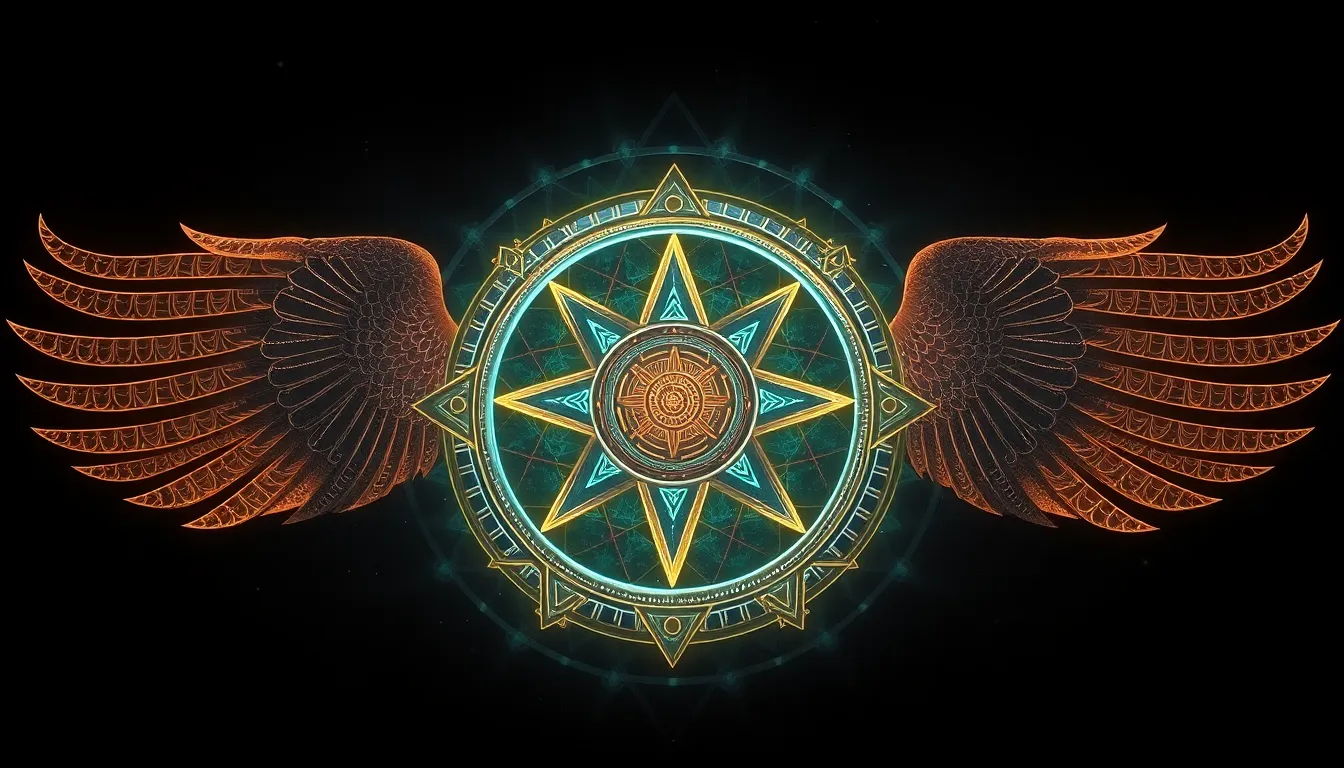The Geometry of the Sacred Shield: Myths of Protection in Egypt
I. Introduction
In the rich tapestry of Egyptian mythology, the concept of protection holds immense significance. Egyptians believed that life was fraught with dangers, both from the physical world and the spiritual realm. Thus, the need for safeguarding oneself was paramount. Among the various symbols and artifacts that represented protection, the Sacred Shield stands out as a powerful emblem.
This article aims to delve into the myths and geometric symbolism surrounding the Sacred Shield, exploring its origins, significance, and how it reflects the values and beliefs of ancient Egyptian civilization.
II. The Historical Context of Egyptian Protection Myths
The ancient Egyptians held a complex belief system that revolved around the concepts of protection and safety. They viewed the world as a place where chaos constantly threatened order, and thus, protective deities were revered to ward off evil.
- Deities of Protection: Gods like Horus, Isis, and Anubis were often invoked for their protective qualities. Horus, in particular, was associated with kingship and protection, often depicted as a falcon that watched over the pharaohs.
- State Protection: The pharaohs, considered divine rulers, relied on these deities to protect not only themselves but also their kingdoms from external threats.
Numerous artifacts and texts from ancient Egypt display protective symbols, including amulets and inscriptions, which were believed to enhance one’s safety in life and the afterlife.
III. The Geometry of Protection: Symbols and Shapes
Geometry played a crucial role in ancient Egyptian art and architecture, particularly in the representation of protective symbols. Various geometric shapes conveyed specific meanings and attributes.
- Circles: Often symbolizing eternity and completeness, circles were associated with the sun and the protection it provided as a life-giving force.
- Triangles: Representing stability and strength, triangles were frequently used in the construction of pyramids, which served as both tombs and protective structures for the deceased.
Symmetry and balance were essential in these symbols, reflecting the Egyptians’ understanding of harmony in the universe. Examples of geometric motifs can be found in:
- Pyramids and temples, where the layout was meticulously designed to align with celestial bodies.
- Wall paintings and carvings that utilized geometric patterns to enhance protective meanings.
IV. The Sacred Shield: Mythical Origins and Representations
The Sacred Shield is steeped in mythological origins that highlight its significance in protection. According to various creation myths, the Shield was fashioned from the materials of the universe and imbued with divine power.
In Egyptian art, the Sacred Shield is often depicted with intricate designs, symbolizing the protective barriers it provided against malevolent forces. Its association with deities is noteworthy:
- Horus: As a god of protection, the Shield was believed to embody Horus’s protective gaze, safeguarding the pharaoh during battles.
- Isis: The goddess of magic and healing, Isis was often invoked alongside the Shield, representing the nurturing aspect of protection.
V. Protective Rituals and Practices in Ancient Egypt
Ancient Egyptians engaged in various rituals that involved the Sacred Shield, emphasizing its role in safeguarding individuals and communities. These practices included:
- Ritual Offerings: Offerings were made to deities to invoke their protection, often accompanied by the recitation of prayers and spells.
- Amulets and Talismans: Small representations of the Sacred Shield were crafted as amulets, believed to provide personal protection to the wearer.
Sacred spaces, such as temples, were also designed with geometrical precision, creating an environment that fostered safety and divine presence for worshippers.
VI. The Influence of the Sacred Shield on Egyptian Warfare
The Sacred Shield served not only as a spiritual symbol but also as a practical tool in warfare. Its imagery and significance permeated military contexts:
- Military Shields: Warriors carried shields that bore protective symbols, believed to confer strength and safety during combat.
- Depictions in Art: Reliefs often showcased pharaohs wielding the Sacred Shield, reinforcing the idea of divine protection in battle.
The relationship between divine protection and military success was deeply ingrained in the Egyptian psyche, where victory was often attributed to the favor of the gods.
VII. Contemporary Interpretations and Legacy
In modern times, the Sacred Shield and its protective symbolism have found resonance in various cultural contexts. Contemporary interpretations include:
- Popular Culture: The imagery of the Sacred Shield is often seen in movies, literature, and art, symbolizing strength and resilience.
- Spirituality: Many spiritual practices today draw inspiration from Egyptian protective myths, utilizing symbols and rituals for personal empowerment.
The geometric principles inherent in these symbols continue to influence modern design and spirituality, illustrating the enduring legacy of ancient Egyptian beliefs.
VIII. Conclusion
This exploration of the Sacred Shield and its protective myths reveals the profound significance of protection in ancient Egyptian culture. Through geometric symbolism, rituals, and the veneration of deities, the Egyptian people sought to navigate the complexities of life and the afterlife.
The myths surrounding the Sacred Shield reflect a timeless human desire for safety and assurance in the face of uncertainty. As we continue to engage with these symbols, we gain insight into the enduring power of ancient beliefs and their relevance in our contemporary world.




